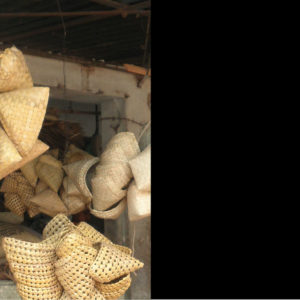It’s all about the product packaging isn’t it? The colours, the design, the shape of it, what you see is what you buy into. It’s shallow, but it is how we buy. But what happens when you start asking questions like – how is it made? Or what is it made of? More often than not, brands shy away from answering such questions because of the way sustainable packaging has been portrayed. Expensive, lack of branding opportunities and limited choices. Such are the beliefs around sustainable packaging.

But before we dive into debunking these myths, let’s catch up a bit on what sustainable packaging is all about.
Sustainable packaging for brands has become a social norm and is highly influential when it comes to customer purchasing behaviour. Customers are constantly looking for brands who have taken environment-friendly initiatives as we are all well aware of the consequences that unsustainable packaging leads to – an exponential increase in the amount of waste that finds its way to landfills, causing further damage with greenhouse gas emissions. Packaging waste is a massive global problem. According to the EPA, packaging makes up nearly one-third of all household waste. As e-commerce grows, this proportion is set to increase. Now that statistic implies that we must set on a different course, before it’s too late. A series of some small but impactful steps must be taken, especially by big businesses in retail. This brings us to why we’re here. Let’s get cracking on invalidating the myths around sustainable packaging, which unfortunately people still seem to fall prey for.
Myth 1: Sustainable packaging is expensive
Here is a classic case of supply and demand. Majority of product packaging is made of plastic, and due to its high usage, other materials have become expensive. While the cost of sustainable packaging may be high initially, what most brands miss out on realising is the impact of a green strategy in long-term success. Studies by the Carbon Disclosure Project (CDP) prove that businesses that adopt eco-friendly materials and processes are very likely to see a return on investment of 18 percent, or even more, depending on how well it has been implemented. When businesses adopt a green strategy, it attracts a demographic of the environmentally conscious. Keep in mind that this demographic is growing fast and if your brand isn’t catering to their needs you will be decreasing your brand’s market share. It is all about what consumers think of your brand, and if they think you are against the environment in today’s world, it is unlikely for you to earn their loyalty.
Myth 2: Sustainable packaging means losing out on branding opportunities
When sustainable packaging comes into the picture, it often makes you imagine some boring and dull brown paper with visible reused fibres. For businesses, this would mean giving up on a rich look that would have customers willing to pay a premium price. However, this assumption is far from the truth. Today’s world isn’t short of innovative and custom packaging options. Choosing well for your product’s sustainable packaging can go a long way when it comes to aesthetics. In fact, minimalistic design has more of a premium look to it than taking a tried and tested conventional route. Let’s not forget the eco-friendly stamp that instantly gives a premium impression to the customers, two-thirds of whom by the way, are willing to pay way more for sustainable brands.
Myth 3: Sustainable packaging material choices are limited
Spilling over from the previous myth, sustainable packaging isn’t just limited to ‘boring and dull’ brown papers. Credit to new innovations, there is an abundance of choices when it comes to choosing packaging materials. Bio-plastics for instance, while still unknown to many, has been slowly but steadily gaining popularity. Sugarcane and cornstarch have the same attributes as its counterpart plastic. Waterproof? Check! Durable? Check! Easy to print on? Check! Where have these two been all our lives? But, if this still causes hiccups to implement then you’re up for a treat because green materials come in abundance. If this isn’t gratification to your dilemma then make way for more green materials. You can choose from a range of poly lactic acid (PLA), bagasse, recycled paper and post-consumer polystyrene, all of which are successfully used to manufacture coffee cups, plates, cutlery and boxes.
It is important to remember that packaging is key to a brand’s attitude. Going the extra mile to reduce your footprint will definitely boost your green image in the market, influencing customers to choose your brand over your competitor’s.
__________________________________________________________________
Sources:
https://www.shipstation.com/blog/3-biggest-myths-of-sustainable-ecommerce-packaging/
https://blog.globalvisioninc.com/sustainable-packaging-in-a-business/
http://ptibox.com/common-misconceptions-about-sustainable-packaging/
__________________________________________________________________

